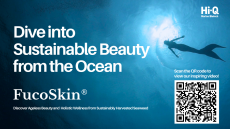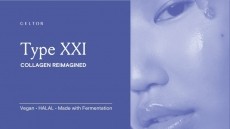Halal beauty reaching a global market: what are the drivers?

With DSM, global ingredients giant, having just announced that the majority of its personal care range is now halal-certified, it is clear that the trend has hit the top of the agenda for some players on a worldwide scale.
Halal beauty refers to any cosmetics or personal care product that meets the requirements of being halal - an Arabic term in Islamic law that describes items that are considered acceptable for consumption or use.
Personal care products that contain derivatives or ingredients from animals that were slaughtered in a non-halal way, for example, would not be permitted, and the whole supply chain (including packaging) must meet halal requirements.
The global halal cosmetics market was valued at 16.32 billion USD in 2015 and is expected to reach 52.02 billion USD by 2025 according to a report by Grand View Research.
Last year, Fashionista described the trend for halal certified makeup and cosmetics has having ‘staying power’, noting that “muslims comprise more than 23 percent of the global population, according to a Pew Research Center estimate, and younger generations are emerging as conscious consumers.”
Why is gaining in popularity?
Kunal Mahajan, project manager for Chemicals & Energy at market research provider Kline, told CosmeticsDesign previously that halal beauty is sometimes seen by consumers as having a strong ethical profile, and marketing efforts to push the trend have been increasing.
“Halal products are also associated with values such as social responsibility, care towards environment, animal welfare and so on. As these values have resonated well with non-Muslim consumers, it has helped the category grow.
“Increased marketing efforts have helped manufacturers maximise the opportunity from this category.”
Still an Asia-centred trend
While western markets can be seen to be taking an increasing interest in the potential of the halal beauty segment, it remains driven, for now, by Asian markets.
The rise of the halal category comes hand-in-hand with a rising segment of young, modern Muslim women, keen to combine religious observance with an emphasis on fashion and beauty, particularly in the Middle East and in South East Asian nations, including Indonesia, India and Pakistan.
How to target consumers
Oru Mohiuddin, senior beauty analyst with market research firm Euromonitor International, says that consumers looking for halal offerings are likely to connect more closely with a local brand than a beauty giant headquartered in a non-Muslim country.
"To succeed, multinationals need to develop a distinct brand identity and clear marketing messages, in addition to just certifying products as halal.
“Furthermore, for a more targeted portfolio it is necessary to develop a good understanding of Islamic rituals,” she has said.




























